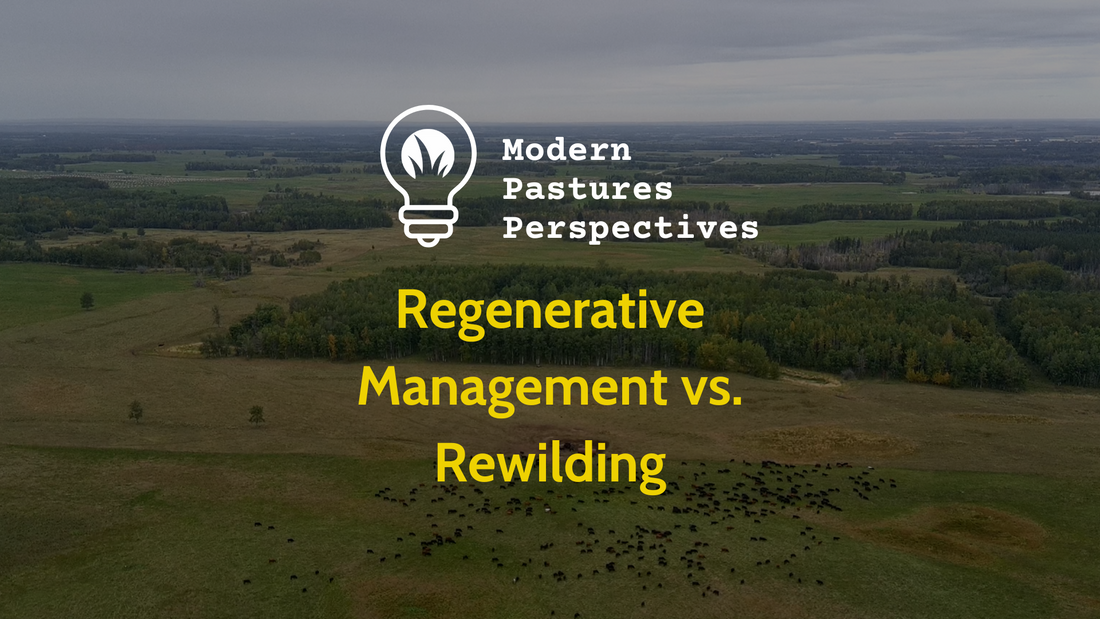
Regenerative Management vs. Rewilding
The American Prairie project represents one of the most ambitious conservation efforts in the United States. Since 2001, this nonprofit organization has been working to create a vast nature reserve in northeastern Montana, with the ultimate goal of connecting 3.2 million acres of prairie ecosystem. As of 2024, they've acquired approximately 460,000 acres—a combination of purchased private lands and public grazing leases—and established a herd of 800-900 bison.
While laudable in its conservation aspirations, this approach raises important questions about land use, ecological outcomes, and economic impact. This analysis examines the merits of the American Prairie project and explores whether regenerative agriculture offers a more balanced alternative.
The American Prairie Project: Goals and Accomplishments
The American Prairie initiative aims to restore one of North America's most threatened ecosystems. Tallgrass prairies once covered approximately 170 million acres across the continent, but today less than 4% remains intact. The project's specific goals include:
- Creating the largest wildlife reserve in the continental United States
- Reintroducing bison as the keystone grazing species
- Restoring native prairie vegetation and biodiversity
- Providing public access for recreation, education, and scientific research
Supporters value this project for its preservation of biodiversity, its ambitious scale, and vision of recreating a historical landscape dramatically altered through European settlement and agricultural development.
The organization has invested over $100 million to date, acquiring strategic parcels connecting existing public lands like the Charles M. Russell National Wildlife Refuge. This represents one of the region's most significant private investments in conservation.
The Critical Gap: Stocking Density and Ecological Function
Despite these accomplishments, a critical issue emerges when examining the project's current implementation: the vast disparity between land holdings and grazing animals.
With approximately 800-900 bison on 460,000 acres, the project maintains a stocking density far below what these ecosystems evolved with. For northeastern Montana's mixed-grass prairie, sustainable stocking rates typically range from:
- 1 bison per 20-35 acres
- 1 cattle pair per 25-40 acres
This suggests the current property could ecologically support between 13,000 and 23,000 bison, meaning present populations represent just 4-7% of potential capacity. Projected across their ultimate goal of 3.2 million acres, the land could theoretically support 91,000-160,000 bison or 80,000-128,000 cattle.
This disparity creates a fundamental challenge: prairie ecosystems evolved with grazing pressure. Without sufficient herbivores, these grasslands face risks of:
- Reduced plant diversity
- Altered fire regimes
- Diminished soil health
- Increased vulnerability to invasive species
- Reduced resilience to climate extremes like drought
The timeline to build bison herds to ecologically meaningful numbers spans decades, creating a prolonged period of ecological vulnerability.
The Regenerative Alternative: Integration Instead of Separation
Rather than viewing human activity and conservation as fundamentally opposed, regenerative agriculture offers a different paradigm that integrates ecological restoration with food production and economic activity.
Allan Savory's work on holistic management demonstrates that properly managed grazing can:
1. Improve soil health: Appropriate animal impact through hoof action, manure deposition, and controlled grazing stimulates soil biological activity and carbon sequestration.
2. Increase drought resilience: Well-managed grasslands with higher organic matter retain more moisture and maintain productivity during dry periods.
3. Enhance biodiversity: Planned grazing creates habitat heterogeneity that supports diverse plant and animal communities.
4. Reduce fire risk: Proper grazing prevents the buildup of excessive dry vegetation that can fuel catastrophic fires.
5. Sequester carbon: Research from the Savory Institute suggests that properly managed grazing lands can sequester 3-5 tons of carbon per hectare annually.
A regenerative approach to the American Prairie region would maintain sufficient grazing density (whether through cattle, bison, or a combination) to ensure ecological function while producing nutritious protein for human consumption.
Economic Dimensions: Comparing Approaches
The economic differences between these approaches are substantial:
Current American Prairie Model:
- High philanthropic costs ($100+ million to date)
- Reduced agricultural output across acquired lands
- Limited economic returns primarily through tourism
- Decreased local tax base and agricultural employment
Regenerative Management Model:
- Maintains food production (potentially 80,000+ cattle across projected area)
- Preserves rural employment and community viability
- Contributes to local and national economies
- Requires less philanthropic capital
While difficult to quantify precisely, the difference in economic productivity between these models likely represents hundreds of millions of dollars annually across the project's ultimate footprint.
Finding Balance: A Hybrid Approach
Rather than an either/or proposition, a balanced approach might incorporate elements of both visions:
1. Maintain appropriate stocking densities: Use a combination of bison and cattle to ensure sufficient grazing pressure for ecological health.
2. Implement adaptive management: Apply regenerative principles that mimic natural grazing patterns through planned rotational grazing.
3. Preserve food production: Continue producing protein on these lands while enhancing ecological outcomes.
4. Engage local communities: Partner with ranchers practicing regenerative methods rather than converting all lands to a single management model.
5. Diversify conservation strategies: Allocate philanthropic resources across multiple approaches rather than concentrating on land acquisition alone.
This approach acknowledges the compatible goals of food production and ecosystem restoration, recognizing that human management can positively influence environmental stewardship.
The Science of Regenerative Grazing
The science supporting regenerative grazing continues to strengthen. Research from organizations like the Soil Health Institute, Savory Institute, and universities worldwide has demonstrated:
- Properly managed grazing increases soil organic carbon compared to unmanaged lands
- Soil water-holding capacity improves by 25-50% with regenerative management
- Plant species diversity increases by 40-80% under planned grazing compared to continuous grazing or no grazing
- Wildlife habitat quality improves with the structural heterogeneity created through properly timed animal impact
This contrasts with the unmanaged or minimally managed approach, which risks creating ecological conditions that differ substantially from both historic patterns and optimal function.
Philosophical Underpinnings
At its core, this debate reflects different philosophical approaches to conservation:
The rewilding perspective sees human activity as fundamentally separate from nature and seeks to minimize human impact. It values a return to historical conditions and removing human economic activity from conservation areas.
The regenerative perspective sees humans as potential positive actors within ecosystems and seeks to align human activities with ecological processes. It values integration rather than separation between conservation and human economic activity.
Conclusion
While the American Prairie project represents a bold vision for large-scale conservation, its current implementation raises significant questions about ecological function, economic impact, and long-term sustainability. The massive gap between current bison populations and the land's grazing capacity creates vulnerabilities in ecosystem health during a transition period spanning decades.
Regenerative agriculture offers an alternative that maintains ecological function through appropriate grazing management while preserving food production and economic activity. Rather than removing millions of acres from the human food system, this approach seeks to align human needs with ecosystem health.
As we consider the future of our prairie ecosystems, we should question whether separation between humans and nature truly represents the most effective conservation strategy. Perhaps the path forward lies not in removing human influence but transforming it—creating management systems that enhance rather than degrade the natural systems upon which we depend.
Under proper management, the 3.2 million acres envisioned for the American Prairie project could support over 100,000 animals. Whether these are bison, cattle, or a combination, maintaining appropriate stocking density is crucial for prairie health. The question isn't whether these lands should be conserved but how we might best achieve conservation goals while honoring ecological imperatives and human needs.
Editorial from Modern Pastures
At Modern Pastures, regenerative agriculture represents the best path forward for our landscapes, food systems, and communities. The core issue extends beyond specific projects like American Prairie—it reflects a fundamental disconnect between urban consumers and the realities of food production.
Many well-intentioned urban voters and consumers, disconnected from their food supply, have come to believe that the only path for environmental improvement is removing human activity through rewilding. This perspective overlooks the tremendous potential of holistic agricultural management.
A better approach is to integrate grazing livestock into diversified farming systems, enhancing soil health, water cycles, and biodiversity. This starkly contrasts extractive monoculture agriculture that requires ever-increasing chemical applications while depleting soil quality.
Through regenerative practices, we can simultaneously produce nutritious food, support rural communities, and enhance ecological health. The choice isn't between using land or preserving it—it's about transforming how we use land to create systems that heal rather than harm. We're committed to building this future at Modern Pastures, one acre at a time.
